Description
Chanterelle Mushroom USA
Chanterelle mushrooms uk are some of the most popular edible mushrooms in the world. If you enjoy foraging for wild mushrooms. you’ll want to familiarize yourself with this tasty variety. Let’s take a look at some chanterelle mushroom key facts and information.
What Are Chanterelle mushrooms uk ?
Chanterelles are edible mushrooms that are foun growing on forest floors. near conifers and deciduous hardwood trees. They are sometimes found growing near wild blueberries as well.
Chanterelles form a symbiotic relationship with tree roots. so they are usually found attached to the ground under trees. They are in season at different times depending on the region. but they grow best in warm, humid, shady conditions.
What Do Chanterelle Mushrooms Look Like?
Chanterelle mushrooms uk are usually bright yellow or orange. but some types may also be white, red, light yellow. and even blue or black. They tend to grow or in small clusters.
Chanterelles have flat, wavy caps and hard, flat gills on their undersides. The stems tend to widen toward the caps. giving these mushrooms a fountain-like appearance.
HOW TO IDENTIFY Chanterelle Mushroom uk
Chanterelles have several look-alikes in the wild. most the jack-o-lantern and false chanterelle mushrooms. When foraging for mushrooms. it’s important to identify true chanterelles so you don’t get them mixed up with the poisonous. jack-o-lanterns. or bitter false chanterelles.
Chanterelles Vs Jack-O-Lanterns
Chanterelle mushrooms uk are more flat and wavy than jack-o-lanterns. which tend to have smooth, round caps. Jack-o-lanterns are often found at the base of trees, growing near or on the trunk.
Chanterelles are usually smaller and yellower than jack-o-lanterns.
The biggest difference is that jack-o-lanterns. tend to grow in large clusters and have shared stems. while chanterelles have their own stems and usually grow alone or in small groups.
The following video will give you a good. visual on the differences between chanterelles and jack-o-lanterns.
Chanterelles Vs False Chanterelles
Chanterelles and false chanterelles are similar in appearance. but closer inspection will reveal some key differences.
False chanterelles tend to grow on loose forest debris. so they won’t be attach to the ground as chanterelles would be. True chanterelles also tend to have brighter, more vibrant colors.
False chanterelles have soft, fleshy gills that break off if you rub your finger across them. True Chanterelle Mushroom ukhave flatter, harder gills that won’t break off as .
Types Of Chanterelle mushrooms uk
Chanterelle mushrooms are generally divided into different types by their color. The golden chanterelle is one of the most well-known and popular types. bother varieties may be more common in certain regions.
For example, white chanterelles are often found along the west coast of the United States. while in the southeast, red and black types are more common.
Most chanterelle types fall under the Cantharellus or Craterellus genera.
Conclusion
Chanterelle mushrooms uk are foun distributed across several continents. They come in a variety of colors but all share the distinctive. fruity-peppery flavor mushroom enthusiasts love in their food. Here are our guides on how to clean them and store them.
Read also about other forest mushrooms – here are our guides about Death Cap, Hen Of The Woods, Jack O’Lantern.
Chanterelle Mushroom uk Identification (General Characteristics and Traits)
Cap: The cap is not distinct from the stem, in most cases. Instead, the stem flares out like a vase and becomes the cap. The top may be anywhere from almost flat (as though the vase were full to the brim). to indented (as though the vase were empty), depending on species. Gills: There are no gills. The spores are release from the outside of the “vase,”. usually from raised. branched structures that may be low and veinlike or deep and gill-like. or anywhere between. Some species have almost smooth outsides. No chanterelle or trumpet has true gills, yet. Smell: Many species smell sweet or fruity. Edibility: Most are considere choice. Habitat: Chanterelles are mycorhizal. meaning they grow in partnership with tree roots and are so found. fruiting from the ground near trees, but never from wood.
Chanterelle mushrooms uk and trumpets together have a very distinctive look. The lack of true gills particularly makes the group. easy to recognize determining which member of the group. one actually has is much harder, though, in part because, as in so many other fungal groups, the taxonomy is in flux. There are species that have recently been divid into whole groups. species that have been re-categorized. and doubtless species that haven’t been describe yet.
The important characteristics to look at are the height of the spore. producing ridges and the color of the different. parts of the fruiting body, but these are variable even. within a single species and in any case difficult to describe with any precision. For example, the ridged spore surface turns pinkish with maturity in some species. but the color can be difficult to see except in strong light. and some people question whether “pink” is the right word for the color at all. Spore print color can also be important. but prints of various colors can look white unless the print is heavy enough.
It’s not that Chanterelles can’t or shouldn’t be identify to species, they can and they should. it’s not always a straight-forward process.
List of Chanterelle Mushroom uk
The following is a partial list of Chanterelle and Trumpet species.
Golden Chanterelle (Cantharellus cibarius)
This is THE chanterelle, the one all the others are name after, so it is sometimes called “chanterelle,” . without an adjective. It is more or less orange to yellow, and has an apricot-like scent[iv]. Until recently, it was consider to have wide range across Europe and North America. but the North American population has now been into. species that are not yet well described
[v]
. Any member of the group can still be call golden chanterelle, if one is speaking
Cinnabar-Red Chanterelle (Cantharellus cinnabarinus)

This one issmaller than the golden and has a color ranging from bright pink to deep reddish-orange. Its culinary uses are the same, though it’s not as well known[vi]. , “cinnabar” is a red mineral ore from which mercury is derive.
Small Chanterelle (Cantharellus minor)

As the name implies, this species[viii] is very small with a thin, very long, stem—somewhat like a flat-head nail. The stem can be hollow. It can be confuse with small examples of golden chanterelle.
White Chanterelle (Cantharellus subalbidus)
The white chanterelle[ix] is larger than most of its relatives and white or whitish in color. Older specimens, or those that have been handle, may stain yellowish. This species is foun almost in old-growth forests, not in younger second growth. Whether this means the fungus cannot live in young forests. or if its fruiting is
delayed until old-growth status is reache is not clear.
Ashen Chanterelle, or Black Trumpet ( Chanterelle Mushroom uk)
This is one of several species[x] referred to as “black trumpet.” Unfortunately, finding any information on this one is difficult. It is dark gray to black, with a white bloom on the sides where spores are produce.
Horn of Plenty (Craterellus cornucopioides)
This is another “black trumpet.”[xi] It, too, is black but develops a white bloom as the spores mature. It is one of those where the “vase” appears empty. It’s a European species, but has several North American equivalents.
Flame Chanterelle (Craterellus ignicolor)
This one, also called yellow foot or small chanterelle[xii], is almost as small as the other small. chanterelle already listed, and it develops a distinct hole in the top. like a very narrow interior of the vase. It is yellow, but sometimes its sides, where its ridges are, become pink or pinkish with maturity.
Funnel Chanterelle (Craterellus tubaeformis)
Another yellow foot! This one is also called the winter mushroom[xiii]. The base of the stem is yellow, the top of the cap is brown, and the sides are gray. It might actually be species..
Fragrant Chanterelle (Craterellus odoratus)
Despite the name, the fragrant chanterelle[xiv] is not especially fragrant. nor is its scent distinctive within the usually good-smelling chanterelle group. It has thin flesh and a deep, empty vase shape, like the black trumpets, but is a bright yellow-orange.
Chanterelle Mushrooms Look-Alikes
Besides the trumpets. which arealternate chanterelles, there are a few other mushrooms that are sometimes. mistaken for chanterelles. Some are edible, others are not. The key to avoiding confusion is to remember that chanterelles do not have true gills. do not have scales, do not grow on wood, and most have unbranched stems. Also, remember that even an expert can make a mistake through inattention to detail.
Blue Chanterelle (Polyozellus multiplex)
Blue chanterelles[xv] are not currently listed in the same genus, or even the same family, as the true chanterelles. but their fruiting bodies do have the same vase-like shape. Their flesh is brittle (most chanterelles are somewhat fibrous. almost like string cheese) and the blue to black color is distinctive. The stems branch, producing clusters of caps. An online search on their toxicity yields websites listing recipes, so people do eat them.
Gomphoid Mushrooms
The genus, Gomphus, has been divide into several not-very-closely-related. groups now referred to as the gomphoid[xvi] mushrooms. Though members of a different taxonomic family. the Gomphaceae, they resemble chanterelles and trumpets. They differ in having either scaly upper surfaces or branched stems. Their spores are also rough, while those of the chanterelles and the trumpets are smooth. Some members of the group are definitely toxic, but others are eaten withoutill. effect a difference that could depend on cooking technique. or other factors as much as on the biochemistry of the fungus[xvii].
False Chanterelle (Hygrophoropsis aurantiaca)
The false chanterelle[xviii] is as the name implies. similar in size, color, and sometimes shape to the golden chanterelle. and is sometimes confused with it. A close look distinguishes the two. but, since the false chanterelle has true gills. not false gills or ridges, and is umbrella-shaped. not vase-shaped (the center of the cap may sometimes be depress enough to suggest a vase). The cap surface is also velvety in texture. whereas all the chanterelles and trumpets are smooth. and the false chanterelle is not mycorhizal but feeds instead on well-rotted wood and woody debris.
Some people eat this species with no problems, although it reportedly doesn’t taste very good. but there have been reports of gastrointestinal upset and hallucinations. Worse, it could be confuse for the toxic jack-o-lantern.
Eastern Jack-O-Lantern Mushroom (Omphalotus illudens)
The eastern jack-o-lantern[xix] is another that can be confuse with the golden chanterelle because of its orange color. though mature specimens can develop a vase-like shape as the edges of the cap turn up and become thin and wavy. The stem is thicker at the top as well. But it, too, has true gills and a fondness for growing on wood. Its claim to fame, aside from it’s resemblance to a chanterelle, is that the gills can sometimes glow in the dark.
It’s also toxic, and is the primary reason why no one should eat false chanterelle. which it resembles quite (the main differences are its smooth surface and the fact that its gills do not fork). While it rarely kills those who eat it, the symptoms are reportedly severe.
There are many, very similar Omphalotus species. any of which could be confuse for a golden chanterelle by the unwary.
Chanterelle Mushroom uk Benefits
The golden chanterelle has been the subject of recent scientific. study suggesting that certain of its extracts have immunoregulatory properties[xx]. antioxidant activity[xxi]. antimicrobial activity[xxii], and other potential benefits. but, in all cases, the studies involved either chemical analysis alone. or chemical analysis in combination with in vitro studies. not human or animal subjects. While it seems possible that effective medications can be derive from golden chanterelle. (and from its close relatives). it hasn’t done yet. Whether eating the mushroom could have a medicinal benefit is also unclear.
The idea that chanterelles make healthy food is more definite [xxiii]. since they are low in total calories and fat and high in copper. niacin, pantothenic acid. and vitamin D. While a large part of the mushroom’s total calorie count is from protein… there are so few calories in a serving that the total amount of protein is low. Like most mushrooms, the chanterelle is water.
Chanterelle Mushrooms Dosage
No dosage has been establishe because no medicinal. use has been establishe some might be in the future. The cooked mushroom can be eat
Chanterelle Mushroom uk Toxicity, Safety, & Side Effects
Any food can cause allergic reactions to sensitivities in some individuals. but the primary danger with chanterelles is that of mistaken identity. Jack-o-lantern is the most likely toxic look-alike. but other, dangerous mistakes are possible. The key is to not underestimate the ability of humans to make mistakes. even obvious-seeming mistakes. It is important for foragers to take the time for careful identification.
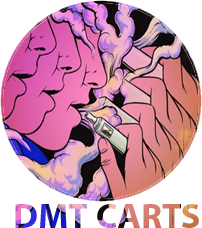
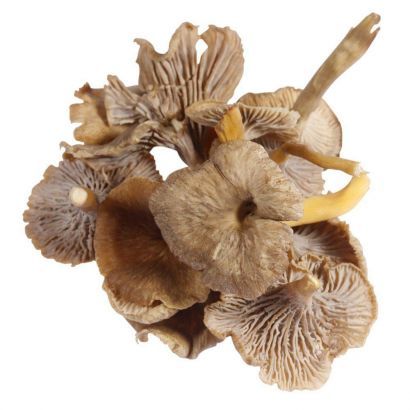

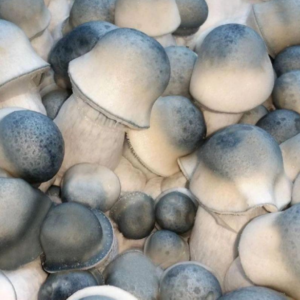
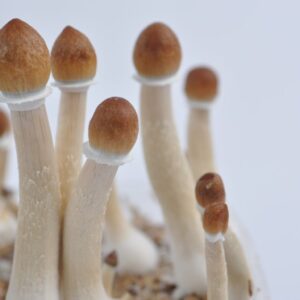
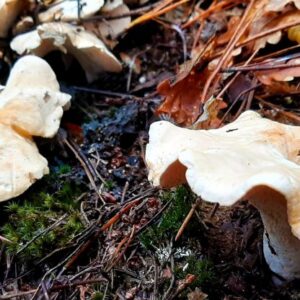

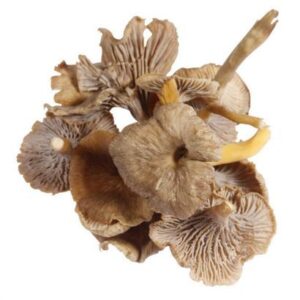
Reviews
There are no reviews yet.